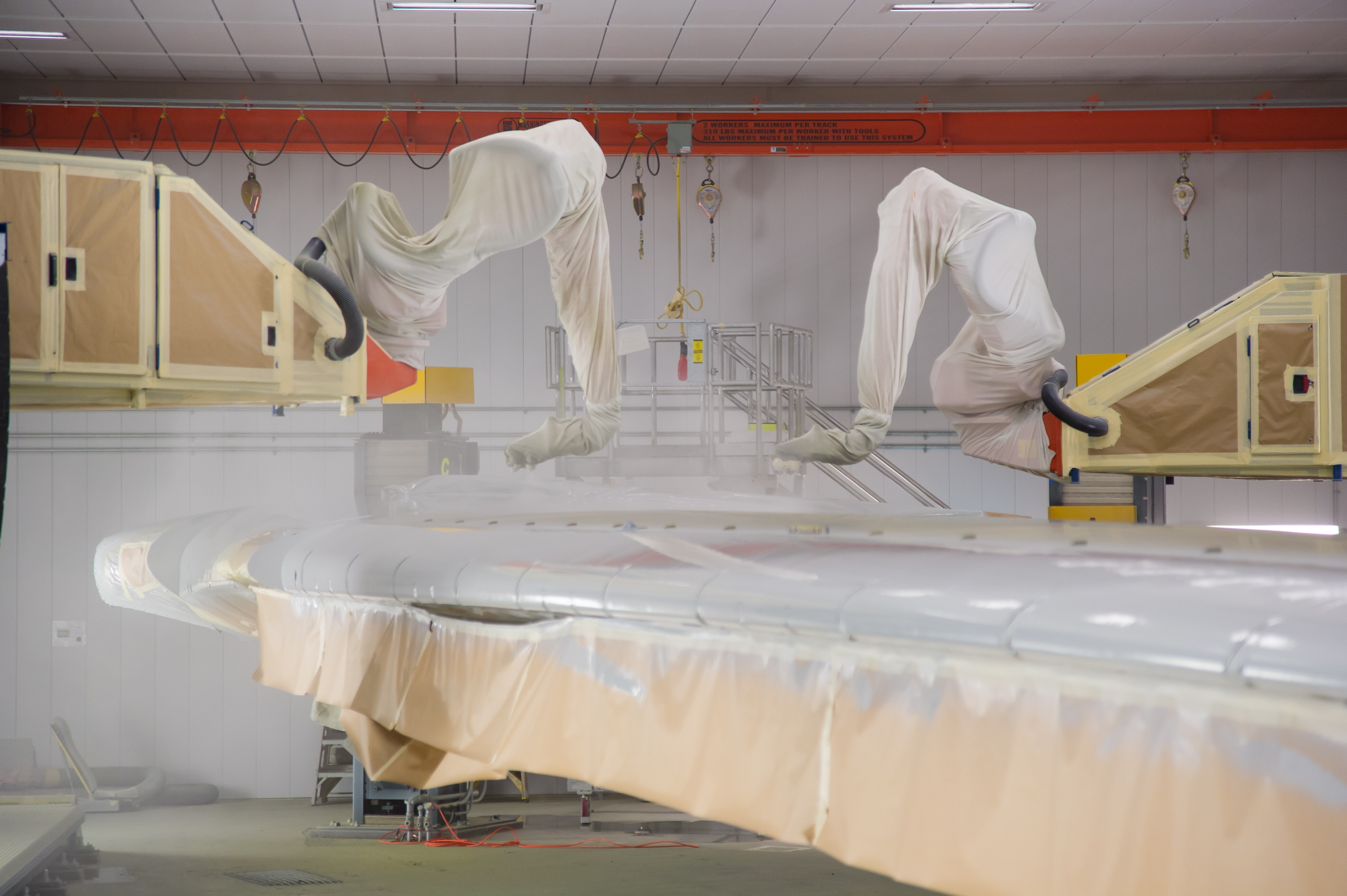Boeing Goes Lean with Robotic Wing Painters
Taking a page from the auto industry’s book, Boeing has added some high-tech workers to their Everett widebody-jet assembly plant. The new robotic painting machines are responsible for washing, applying solvents to, rinsing and spraying two types of paint to 106-foot 777 wings, and are capable of reaching into some of the more complex spaces within the wing for corrosive protection.
 The robots glide along tracks set to either side of the wing, and are able to crane their animatronic necks to provide a perfect paint coat. Painting the wings manually would take a team of painters 4.5 hours, but the robots are able to get the job done in just 24 minutes.
The robots glide along tracks set to either side of the wing, and are able to crane their animatronic necks to provide a perfect paint coat. Painting the wings manually would take a team of painters 4.5 hours, but the robots are able to get the job done in just 24 minutes.
As the Seattle Times’ Dominic Gates put it, the machines are the “pride and joy” of Jason Clark, Boeing’s director of 777 manufacturing. What makes it even better is that, as Clark was quick to point out, “no layoffs occurred because of the implementation of this technology.”
To compensate for the machine takeover, half of the 777 wing-painting team have been reassigned to related jobs, such as programming the robots, or painting more complex parts of the plane that can’t be handled by a robot, such as painting the airline liveries, or handling the aerodynamic finish required for the 787-9 tails.
Elizabeth Lund, head of the 777 program, said that the previous, manual painting method had been a solid barrier to increasing production rates. But thanks to Boeing’s lean-manufacturing-inspired switch to robotic painters, the company has been able to increase its output to 100 jets per year—which comes out to 32 wings more than was previously possible.
“When lean works properly, and this is a perfect example, you increase capacity and you don’t lay people off,” Lund said.
And these aren’t the only robots working on the 777 line. Two other automated machines handle customized drilling for the floor grid and for the major joins throughout the fuselage. According to Clark, these machines get the job done three to four times faster than a human team could.
Clark said that the inspiration came following his team’s visit to the BMW factory in Munich last fall, which is run by hundreds of automated systems with the help of just a few workers. But while 95 percent automation is becoming a new norm for the auto industry, Clark notes that Boeing is 90 percent manual, and that an aircraft factory will likely never meet that rate of automation.
But for now, the aerospace industry inches closer. By midsummer, all 777 wings will be painted this way, and the upcoming 777X model, to be assembled in the Everett facility, can also be painted with Boeing’s new robotic paint crew.
Full story at the Seattle Times










